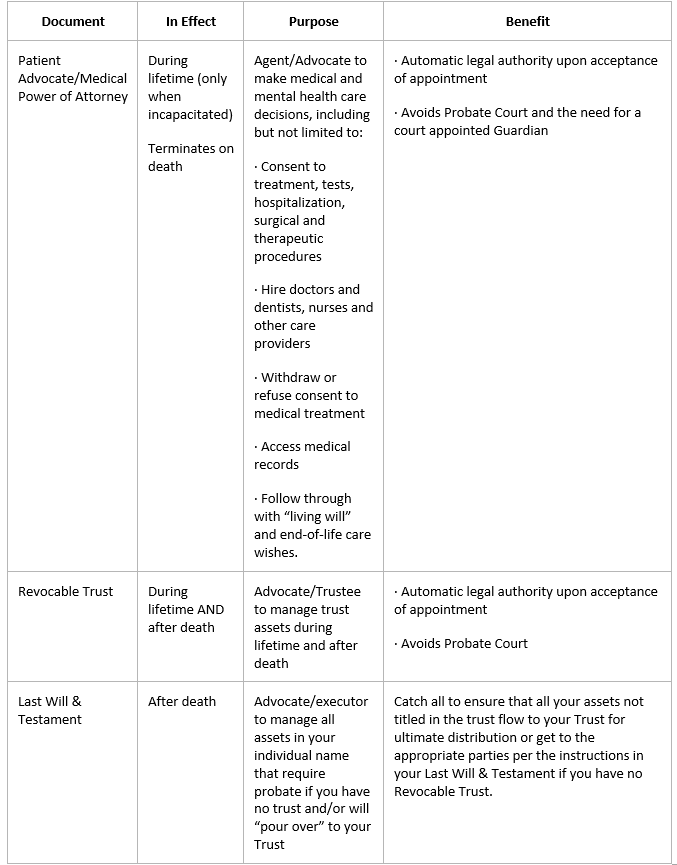![]() Contributed by: Kelsey Arvai, CFP®, MBA
Contributed by: Kelsey Arvai, CFP®, MBA
Life insurance serves a crucial purpose for your family and heirs, as it ensures your beneficiaries will be cared for in the event of death or another tragic event. Finding the right life insurance can seem intimidating. However, the good news is that life insurance starts with two options, term (temporary) or permanent, each with unique benefits and features.
Term Insurance:
Term life insurance provides affordable coverage that lasts for a period of time and is typically the least expensive insurance you can buy. Most policies are designed for premiums to remain at a level rate for a set number of years, but some premiums may increase annually. If the policyholder passes away when the policy is in force, the death benefit is paid to the beneficiaries of the policyholder, typically in a tax-free lump sum.
Length of Coverage – Common term lengths include an annual renewable term, 10-year-level premium term, 15-year-level-premium term, 20-year-level premium term, and 30-year-level-premium term.
Taxability - Death benefit is tax-free with very few exceptions (business planning and transfer for value rules are pretty much the only exceptions).
Premiums – Based on a person’s age, health, and life expectancy.
Cash Value - Term insurance doesn’t build equity, meaning there is no cash value accumulation. Premium pays for the cost of insurance and nothing more.
Option to convert – It may be possible to turn your term life into permanent life insurance without additional evidence of insurability, depending on the insurance company. This is usually only available for a specified amount of time.
When to consider term life insurance policy?
Term life insurance is ideal for people who would like the maximum amount of life insurance for the lowest cost. Term helps to protect your spouse, your home, and your children. Other common reasons to purchase term life insurance are income replacement, mortgage or debt protection, college funding, funding a buy-sell agreement, and key person protection for a business.
Permanent Insurance:
Permanent life insurance often doesn’t have an expiration date; as long as premiums are paid, most permanent life insurance policies will remain in force as long as the policyholder is alive. Permanent life insurance is more expensive because this policy type typically offers coverage and a cash value.
Universal Life Insurance:
“Permanent Death Benefit” product; underwritten so that the death benefit will be in force until age 90, 95, or 100. The age depends on what product you choose at the onset; many products will have the age the policy will lapse in the product title.
Premiums – Flexible premium payments that may or may not guarantee death benefit and may or may not build a cash value. It’s ideal to slightly over-fund premiums in the early years of the policy to accumulate cash value to help pay the cost of insurance later.
Cash Value – The rate of return on your cash value and any investment options vary depending on the type of Universal Life Policy you buy (guaranteed, indexed, variable, etc.).
Death Benefit Types – Option A or “Level Death Benefit,” meaning when the insured dies, is when the beneficiaries don’t get the cash value and the death benefit; they just get the death benefit. Option B or “Accumulating” cash value, depends on the policy and insurer. When the insured dies, the beneficiaries receive the cash value PLUS the death benefit.
Other forms of universal life insurance exist; variable universal life forgoes the guaranteed crediting rate that the carrier provides, and instead, the policyholder assumes the risk on their own shoulders. This is done by allocating excess premiums to sub-accounts; in order to come out ahead, the policyholder would need to consistently outperform the crediting rate provided by the insurance carrier. These policies allow you to invest your cash value across a choice of stocks, bonds, and money market funds.
Whole Life Insurance:
Whole Life offers coverage for the rest of your life and includes a cash value component that lets you tap into it while alive. This is typically the most expensive form of life insurance due to the cash accumulation and having to front-load the insurance cost. Given that many people do not need insurance for their entire lives, it’s crucial to consider if whole life insurance is a good fit for you.
Death Benefit – Guaranteed Death Benefit with guaranteed premiums and cash values. Underwritten to provide a permanent death benefit and accumulate cash value. Unlike Universal Life Insurance, this policy will be in force regardless of whether the insured dies at 80 or 120.
Premiums – Level premiums guarantee a death benefit when the insured dies. You’ll pay a fixed amount monthly, quarterly, semi-annually, or annually. Single premium, you’ll pay the entire policy cost upfront. Depending on the policy and carrier, you may pay limited or modified premiums.
Taxability - If a policyholder surrenders a contract for the cash value, they will pay ordinary income tax on the gains above their cost basis. Cost basis is defined as premiums paid minus loans or withdrawals.
There are many flexible options for the dividend or crediting rate. The most common option is to use the dividend to purchase “paid-up additions” to increase the death benefit or cash value over time without medical underwriting or increasing the premium payment. Some policies are non-participating, meaning that you won’t receive any dividends.
When to consider a permanent life insurance policy?
Permanent life policies are an expensive way to buy coverage. Depending on your goals, a different type of life insurance might better fit you. Permanent life insurance might be purchased for the following reasons: legacy planning for family or charity, estate tax planning, asset diversification, retirement income planning, and executive compensation.
When deciding what’s right for you, it’s important to have your plan tailored to fit your and your family’s individual needs, making it crucial to consult with your financial advisor.
Kelsey Arvai, CFP®, MBA is an Associate Financial Planner at Center for Financial Planning, Inc.® She facilitates back office functions for clients.
Any opinions are those of Kelsey Arvai, MBA, CFP® and not necessarily those of Raymond James. Securities offered through Raymond James Financial Services, Inc., member FINRA/SIPC. Investment advisory services are offered through Raymond James Financial Services Advisors, Inc.
These policies have exclusions and/or limitations. The cost and availability of life insurance depend on factors such as age, health and the type and amount of insurance purchased. There are expenses associated with the purchase of life insurance. Policies commonly have mortality and expense charges. In addition if a policy is surrendered prematurely, there may be surrender charges and income tax implications. Guarantees are based on the claims paying ability of the insurance company. Raymond James does not provide tax or legal services. Please discuss these matters with the appropriate professional.
Investors should carefully consider the investment objectives, risks, charges, and expenses of variable universal life sub-accounts before investing. The prospectus and summary prospectus contains this and other information about the sub-accounts. The prospectus and summary prospectus is available from your financial advisor and should be read carefully before investing.























